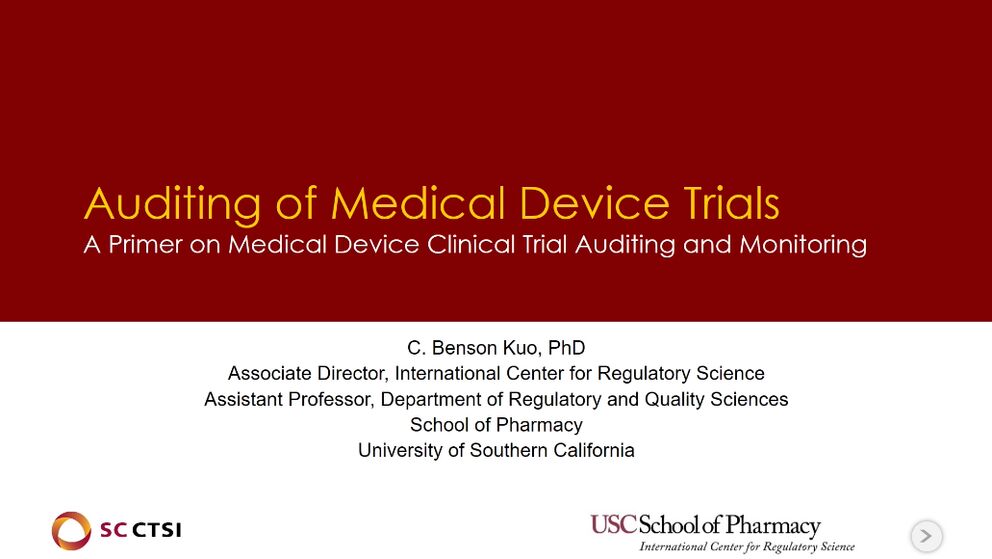- Auditing
- How do the FDA Audit?
- What happens after an Inspection?
- The Warning Letter to Ronald Wakai, PhD
- Monitoring, Auditing and Inspections
- Auditing and Monitoring to ensure Trial Quality
- Starting with a Good Audit Checklist
- Medical Device Clinical Trials
- Three Unique Features of Medical Device Clinical Trials
- A Significant Risk Study defined in 21 CFR 812
- Investigational Device Exemption (IDE) required for Human Study
- What IDE Permits? Exempts?
- Considerations for Different IDE Study Types
- Warning Letters for Medical Device Clinical Trials
- Warning Letters since 2013
- Risk-Based Monitoring of Medical Device Clinical Trials
- Monitoring Methods
- Risk-Based Monitoring (RBM)
- Clinical Monitoring with Quality
Regulatory Science Symposium: Clinical Trials with Medical Devices Session 7: Auditing of Medical Device Trials (2019)
In this series, we will discuss considerations, regulations and resources to utilize when conducting clinical trials with medical devices.
Associate Director, Regulatory Knowledge and Support

